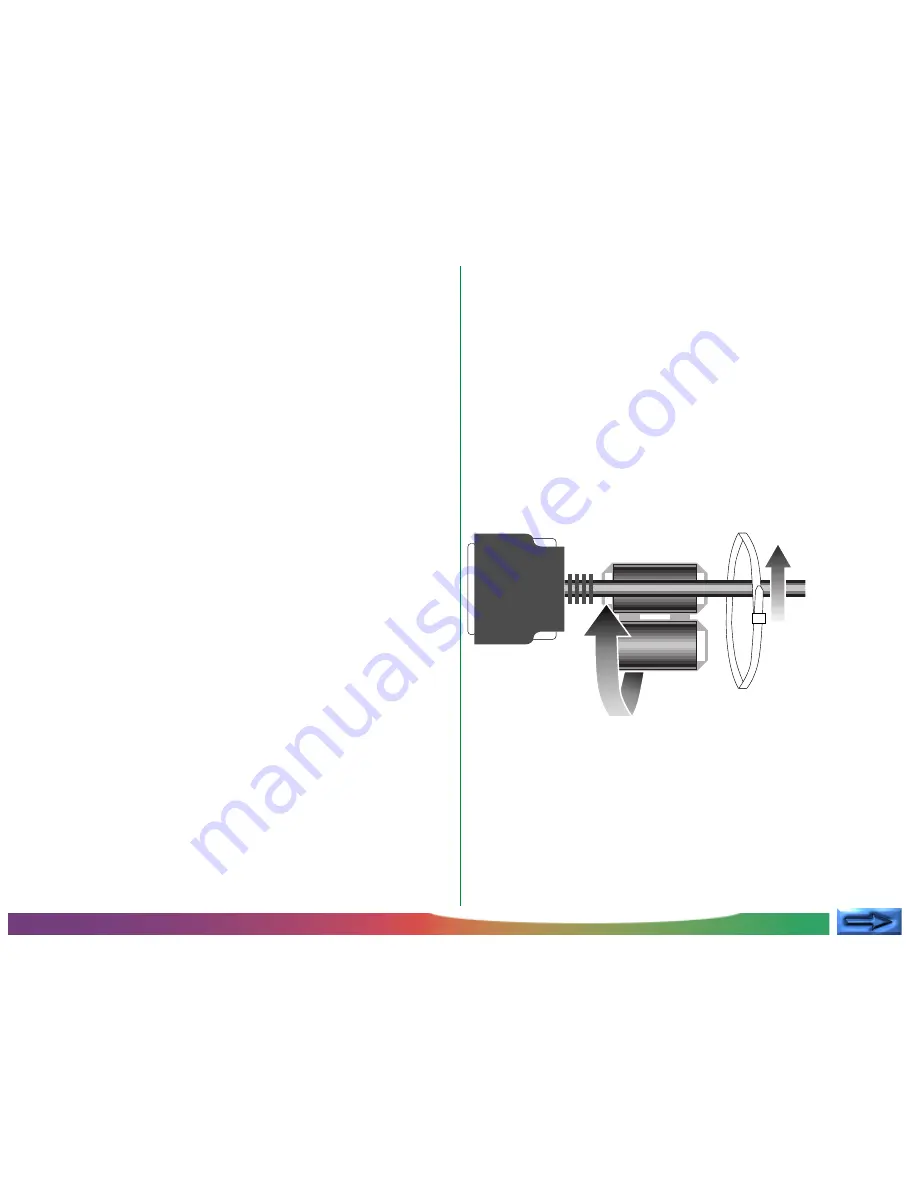
- 22 -
Setup: Connecting the SCSI Cable
SCSI devices are connected to the computer in a “daisy chain.”
Up to eight devices, including the computer and any internal
SCSI devices such as hard drives and CD-ROM drives, can be
connected in a SCSI chain. The first and last devices in the
chain must be
terminated
, i.e., fitted with special circuitry to
reduce noise, making the connection more reliable. If the LS-30
is the last device in the chain, it can be terminated using the
termination switch on the rear of the scanner. Except in the
case of some laptop computers requiring external terminators,
the other end of the chain will be terminated inside the com-
puter, either at the SCSI adapter or at an internal drive. In the
case of IBM PC/AT computers with internal SCSI devices, it may
be necessary to remove termination from the SCSI adapter
board before connecting external devices.
To connect the scanner to the SCSI chain, a SCSI cable with a
male half-pitch 50-pin connector is required. The other end of
the cable must match the connector on the devices to which
the scanner is to be connected. For direct connection to most
Macintosh computers, a 25-pin D-sub connector will be re-
quired (Macintosh laptop computers use a different type of
connector). SCSI boards for IBM PC/AT computers will usually
be provided with a 25-pin D-sub connector, a 50-pin Centronics
connector, or a half-pitch 50-pin connector with the pins ar-
ranged in two separate rows or attached to a central “finger.” If
the correct type of cable is not available, an adapter can be
attached to one or both ends of the cable. To prevent interfer-
ence, SCSI cabling should be of a high-impedance type and be
as short as possible. The total length of cabling in a SCSI chain
must not exceed six meters (twenty feet), but be aware that
the reliability of the SCSI interface will drop as the length of the
cable increases.
A SCSI cable is provided with scanners sold in the United States
and Canada. If your scanner was purchased in another region,
before connecting the SCSI cable you should attach the ferrite
core provided with your scanner (the cable provided to cus-
tomers in the United States and Canada does not require a
core). Place the SCSI cable in the center of the open core and
close the core tightly. The core should be attached as far as
possible from the scanner; i.e., as close as possible to the other
device to which the cable is attached. Attach the plastic tie on
the scanner side of the core to prevent the core from sliding
out of position.
2. Place tie around
cable and pull tight
1. Close and latch core
To LS-30
➜
















































